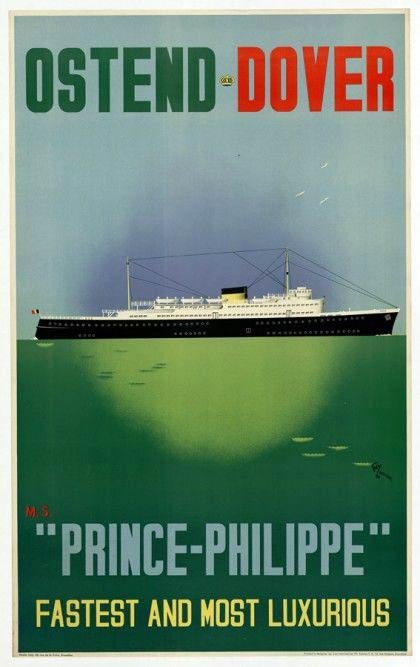Mid-1940s book collection of early 'Bimbo, Romarin et Misky' stories, still drawn by Guy Depière himself.
Guy Depière (often misspelled as Guy Depierre) was a Belgian advertising artist, who in the 1940s turned to publishing comic magazines like Bimbo, Jeep and Blondine. Initially making most of the content himself, his publishing imprint Studio Guy eventually recruited artists like Fred Funcken, Marcel Moniquet, Maurice Tillieux, Fernand Cheneval and Fernand Dineur.
Studio Guy
The son of an architect, Guy Depière began working in the Brussels advertising industry in the early 1930s. When World War II broke out, assignments dried out, and Depière switched to publishing children's magazines instead, using his Studio Guy in the Rue de la Croix 28 in the Brussels suburb Elsene.
Aventures Illustrées
Around October 1940, Studio Guy's first magazine was launched under the title Aventures Illustrées. It was an eight-page monthly story paper, entirely written, drawn, edited and published by Depière. Most of the content consisted of picture stories with heavy text captions. A Dutch translation, Geïllustreerde Avonturen, was also launched. In the Spring of the following year, the publication rhythm switched from monthly to weekly. The main character and magazine mascot was Uncle Bimbo, an anthropomorphic elephant, who is accompanied on his adventures by the junior hare Romarin and Miksy the mouse. After a couple of issues, the young artist Fred Funcken joined Depière in his production, drawing the western comic 'Tommy Tuller' and the space opera serial 'Akkor, Roi des Planètes'. Another early artist worked for Guy Depière was Valentin Dufrasne.
After thirty issues, Aventures Illustrées/Geïllustreerde Avonturen merged with L'Éclair/De Bliksem, another Brussels comic magazine, published by ESPES. The main artist of L'Éclair was Fred Funcken, who drew the popular cowboy feature 'Bob Hunter'. As he was also working for Aventures Illustrées, Funcken's role became more prominent in the merged magazine, now called Bimbo-Aventures Illustrées. Also joining Studio Guy was Marcel Moniquet, who took over 'Tommy Tuller'. Because of its anglophile content, the Nazis banned Bimbo in September 1942, ending the magazine's first run after 83 issues. To wind up ongoing stories, two more issues and an annual appeared the following year.
Dutch-language edition of Bimbo-Geïllustreerde Avonturen (containing De Bliksem) and the 4 January 1947 issue of Jeep-Blondine.
Bimbo
Shortly after the Belgian Liberation in October 1944, Bimbo returned, initially only in the French language. Marcel Moniquet and Fred Funcken returned to Depière's studio, while the team was reinforced by Maurice Tillieux, the seventeen year-old intern Fernand Cheneval and a cartoonist using the pen name Zouc. Most of the wartime features returned, such as 'Tommy Tuller', 'Bimbo' and 'Akko'. Among the new series were the humor feature 'Bricole' and the futuristic 'Robin Moderne'. Using pen names like Oncle Guy and Guy de Falais, Depière kept strict control over the magazine's content. He wrote and edited stories, while letting his artists draw them under anglicized pseudonyms. For instance, Funcken signed his work Fred Gu, Fred Dye, Dick John's, Ranch, Mac Bones, Léo Lyon and Hector Hugo, while Tillieux used the pen names John Cliff, James Jhames, Ronald Scott and Jill Morrison. Another notable feature in Bimbo was 'Joë la Tornade' (1948), an adventure serial by Jean-Michel Charlier and Victor Hubinon, who for the occasion used the shared pen name Charvick.
Jeep-Blondine
In June 1945, Guy Depière launched another magazine, Jeep, aimed at young boys. His entire crew joined in the production, with Maurice Tillieux becoming a prominent contributor of features like 'La Bande Infernale' and 'Zouzou et Zourzou'. New artists were Fernand Dineur and Albert Weinberg, the latter the assistant of Bimbo contributors Jean-Michel Charlier and Victor Hubinon. By April 1946, Jeep came with a supplement for girls, called Blondine. The title feature was drawn by Marcel Moniquet under the pen name Odette Lachaumière.
Demise
Dutch-language versions of both Bimbo and Jeep were launched in July 1945, but canceled within the year. From 1945 on, Studio Guy also released book collections of 'Bricole', 'Robin Moderne' and 'Bimbo, Romarin et Miksy'. However, neither Bimbo nor Jeep could compete with the other comic magazines of post-war Belgium, such as Spirou, Tintin, Wrill, Bravo! and Story. The final issue of Jeep-Blondine appeared in February 1947, while Bimbo managed to continue until February 1949. Most of Studio Guy's art staff - Maurice Tillieux, Albert Weinberg, Fred Funcken and Marcel Moniquet - found employment with Héroïc-Albums, a new comic magazine launched in 1945 by Fernand Cheneval.
Final year and death
After his publishing ventures, Guy Depière turned to making watercolor paintings and posters for the Holland-America Line and the Dover-Ostend Line. He died in 1964.
Legacy
Not much is known about Guy Depière himself. In the 2023 monograph book about Maurice Tillieux by Marc Hendrickx, Depière is described as an anglophile, instantly recognizable by his mustache, tweed costume, hat and umbrella. Both in the book and the accompanying stage show 'Tillieux, dans l'Ombre de Gil Jourdan', Depière is portrayed as haughty and authoritarian, an ambitious entrepreneur who lets his artists work many hours for limited wages. In the end, his drive for filling the newsstands with new content proved not beneficial for the overall quality of his magazines. Still, he goes down in history as the publisher whose magazines launched the careers of Maurice Tillieux and Fred Funcken, who later became staples of the Franco-Belgian comic industry.
In 2021, the Belgium-based Chilean artist Felipe Muhr revived the concept and graphic style of Studio Guy's classic space comic 'Akkor' as the webcomic 'Planet Akkor I: The King of the Planet' on the online art platform KIOSK, as part of the COMICS research project of the University of Ghent. Since 2021, Depière's vintage Uncle Bimbo character serves as the mascot of Club Bimbo, a platform "for material and immaterial exchanges around visual narrative", both as a private Facebook group and a physical venue in the La Crypte Tonique bookshop in Brussels' Bortier Gallery.
Poster by Guy Depière for the Ostend-Dover line.






